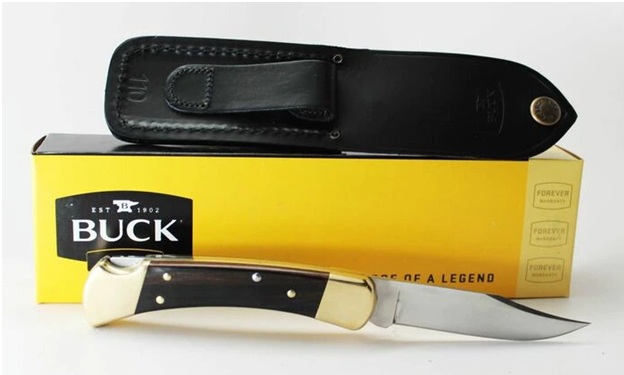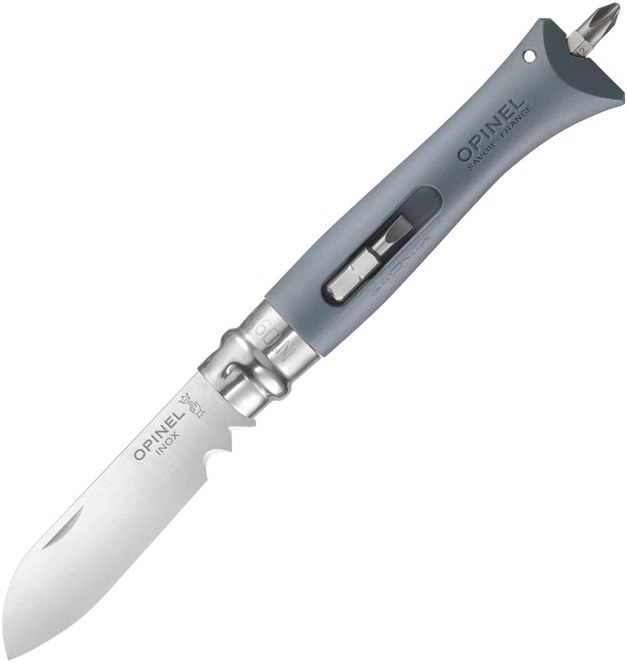Which Lock Type Is Best for a Survival Pocket Knife?
11th May 2021

Survival pocket knife is an interesting term. Is it really a knife that you think about as a tool for survival, and one that you can also carry around in your pocket? Most outdoorsmen wouldn’t rely on a folding knife alone to keep them alive; then again, a serious outdoorsman would never head into the bush with only one blade.
That being the case, if you truly think of a survival pocket knife as a tool that is both a folding knife, and one on which you would stake your personal ability to stay alive in the woods, then you need to pay close attention to its features and the quality of its construction.
Among the things that you need to seriously consider in a knife are its blade length, weight, the type of steel used in manufacturing, what tempering and heat treatment methods have been applied, the construction of the tang, and more.
The thing is, all of these features can and should also be applied to fixed blade knives. The difference here is that pocket knives are folders, and the key difference is in the integrity of the lock.
On that note, we’re going to break down some of the most common types of survival pocket knife locks available to modern consumers, as well as the comparative strengths and weaknesses of each.
●Liner locks
The first type of folding knife locking mechanism is probably also the most common. It wouldn’t be too much of an exaggeration to make the claim that most locking folders produced today use a liner lock mechanism. It might not be an exaggeration at all.
A liner lock keeps the blade open via a tempered strip of steel along the liner that is pressed closed when the knife is also closed. When the knife is opened, this tempered strip springs open into the inside of the hollow left behind by the blade, wedging against the base (tang) of the blade to keep it open. To disengage a liner lock, you simply press the liner back into place before closing the blade.
-Liner lock strengths:
Liner locks are cheap and easy to produce, and easy to learn to use. Almost anyone who has else held or used a folding knife is familiar with a liner lock mechanism. They are also fairly secure and sturdy when quality materials and workmanship are used.
Another great thing about liner locks is that they are very easy to disengage, even with one hand. This makes folding knives with liner locks easy to deploy and easy to close. They’re also convenient and easy to clean, as there are few hidden components in the inner works of the knife. You can work out lint and dust fairly easily with water or compressed air.
-Liner lock weaknesses:
Despite the liner lock’s ease of use, which is probably also its greatest feature, liner locks lack the structural integrity of other, stronger locking mechanisms. You should never baton with a folding knife, to begin with, but any extreme force on a liner lock can cause the liner lock to deform. If this happens, the knife could close on your hand, and the damage to the knife will also be irreversible.
Another problem with liner locks is that when you are twisting the blade or exerting lateral force on the handle, it can cause the lock to accidentally disengage, which is extremely dangerous. Great care should be used in these scenarios.
Also, due to the nature of the mechanism, your hand will also be in the path of the blade when closing the knife, so you must exercise great care.
●Frame locks
A frame lock is a lot like a liner lock, and they are just about as universally recognizable as the former entry. The only real difference between a liner lock and a frame lock is that a frame lock has no liner. Instead of a tempered leaf of the liner springing open to engage the tang, a milled portion of the frame will spring inward when the blade is opened, wedging under a recess in the tang.
Just like liner locks, frame locks are easy and fast to deploy, and just as easy to recognize and learn how to use.
-Frame lock strengths:
The liner lock shares most of its strengths with the linerlock. Like liner locks, they are also easy to produce and easy to use. They can be quickly and easily opened and closed, and most of them can be deployed and then closed with only one hand.
One edge that the frame lock holds over the liner lock is that most of them are stronger than liner locks. Depending on the strength of the frame, or the material from which it is made, the frame lock might be less easy to deform or bend, causing the blade to close accidentally. This could make some frame locks preferable to liner locks.
-Frame lock weaknesses:
Due to their similar nature, frame locks share many of their weaknesses with liner locks as well. Over time, frame locks (the lock bar itself) can wear down, which can result in rock lock or side to side motion of the blade. Sometimes this can be remediated by tightening all of the works, but often it can simply be prevented by being conscientious in your handling of the knife.
Like a liner lock, your fingers will be in the path of the blade while closing, so you’ll have to be careful. Also, despite the fact that framelocks are stronger than linerlocks, they can still inadvertently disengage due to careless handling or lateral stress, so exercise caution when applying force.
●Lock backs
The lock back is one of the oldest forms of locks that you will find exhibited in a survival pocket knife. In fact, it might be the oldest - and even if not, the modern design was pioneered way back in 1963 in the form of a knife you may have heard of as the Buck 110 - the “legendary” blade itself that helped Buck Knives earned its moniker “Edge of a Legend.”

The Buck 110 is also one of the most iconic “survival pocket knives” of all time. It’s lock back mechanism, like those of the knives that followed, operates like this: when closed, a spring bar inside of the knife presses up on a bar that in its turn presses against the closed blade.
When the knife is opened, the blade swings forward until a square recess (or some other milled notch) in the tang engages with a similarly matched protrusion from the bar against which the spring presses. When these two pieces click together, the spring snaps down against the bar, locking the knife open.
-Lock back strengths:
It’s difficult to comprehend without a visual representation, but it’s also well known to anyone that has ever held a lockback that the mechanism is very strong. Because the lock bar is usually as wide as the blade stock itself, they’re usually much stronger than liner locks and typically stronger than frame locks as well. They can also be easily used by right and left handed people, whereas both liner locks and frame locks are designed to be opened or closed by one hand, either the right or the left.
Additionally, the method by which a lock back closes means that your hands will be out of the way of the blade as it closes. All in all, strength and reliability are the two biggest strengths of lock backs.
-Lock back weaknesses:
Despite the strength of the mechanism, play can develop in a lock back, which is effectively impossible to reverse once it occurs and will require a repair. Another weakness is how the blade needs to be closed. Most lock backs cannot be closed with just one hand.
Typically, to close a lock back, you need to alter your grip and depress an exposed portion of the lock bar somewhere along the back of the knife. While this is fairly safe, it is cumbersome and usually cannot be done with one hand.
●Axis locks
Most people that are familiar with Axis locks probably know them from Benchmade knives, which made them popular. The axis lock takes the form of a bar that slides forward and backward along a short track on the inside of the knife, which is in contact with a spring shaped like a U, or more properly, an Omega, due to its similarity to the Greek letter.
When the blade is closed, the bar is forced backward. When the blade opens, the bar slides forward into a recess in the knife tang and the spring holds it there until it is forcefully disengaged by the user.
-Axis lock strengths:
Axis locks are fairly strong and are also easy to use. They’re also ambidextrous and allow both right handed and left handed users to open and close the knives with ease. They enable a user to open and close the blade with one hand (with a little practice) and can be very reliable.
-Axis lock weaknesses:
The springs that hold an Axis lock open are usually not as strong as the springs that hold a lockback or a liner lock open. There are also more moving parts which are susceptible to buildup of grime and grit, which can damage the works. Otherwise, these locks are fairly reliable, strong and easy to learn how to use.
●Button locks
The button lock is probably one of the least common of the locks explored so far. They’re also one of the main modes of activation for automatic knives. When you press the button, you release a spring which opens the blade, somewhat similar to how an assisted open knife works. When the blade is opened, the same button locks into a cutout into the tang of the blade.
-Button lock strengths:
The main strength of the button lock is that it is easy to use. All you do is press it to open, and then depress it before folding the blade. A button lock also has the potential to be strong, depending on the strength of the scales or the knife frame, whatever the button locks against. It will also keep your hands out of the way of the knife as you close it.
-Button lock weaknesses:
The main problem with a button lock is that it is not easy to produce, and like an Axis lock, may have a lot of internals that are difficult to care for. It’s also not the strongest type of lock.
●Collar locks
Collar locks are also fairly rare, but because many knife users will probably come across them in the form of Opinel knives, they’re worth mentioning.
The collar lock takes the form of a ring that encircles the blade when the knife is closed, and is open at one side. When you open the knife, you simply twist the lock around the base of the blade to prevent the blade from folding. To close the knife, just return the collar to its original orientation.

-Collar lock strengths:
Collar locks are simple to manufacture, easy to use, and just as easy to understand. Additionally, the collar can be removed to create a non-locking folder, which is convenient for people that live in locations in which it is illegal to carry a locking knife.
-Collar lock weaknesses:
Despite their simplicity, even high quality collar locks are not as strong as any of the other locks on this list.
Don’t Forget
While these are the most common types of locks you will find in a survival pocket knife, don’t forget that if you’re really going to be carrying the knife for survival, you should pair it up with a sturdy fixed blade knife. Most fixed knives are easy to carry and ideal as survival knives. They can be made with a full tang and used for other tasks for which even the strongest locking folders cannot be used.
Whether you’re looking for a new EDC knife, a dedicated survival pocket knife or a fixed survival knife, we can help. We have an excellent collection of the best pocket knife brands in the industry, including all of those mentioned here and countless others. We also provide free shipping in the U.S. and low prices - so check out what we have on our website, and if you need help or have questions, get in touch with us at whitemountainknives@gmail.com.








